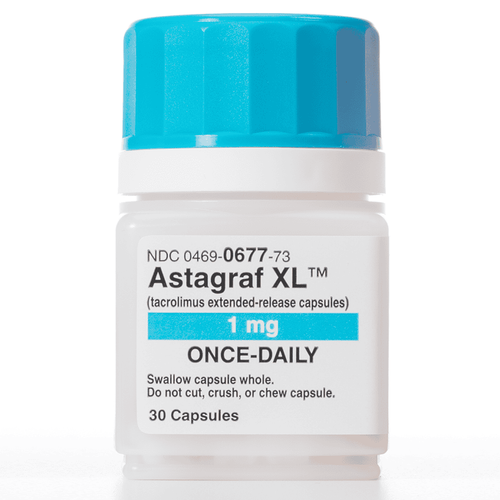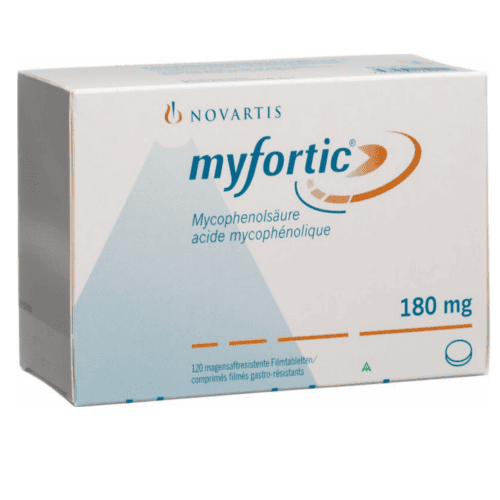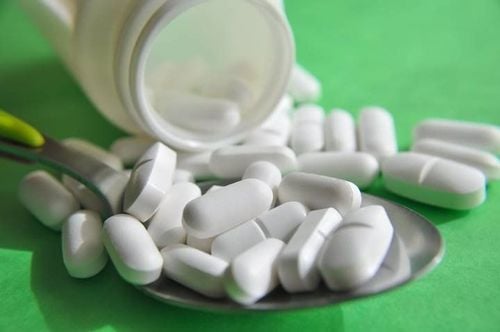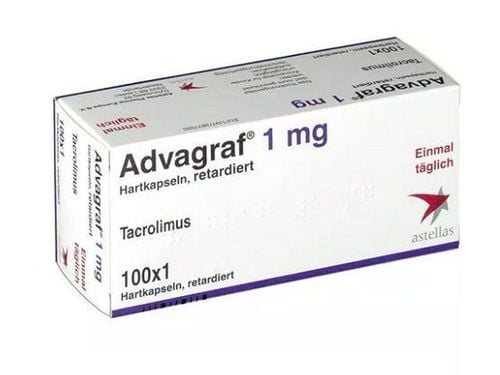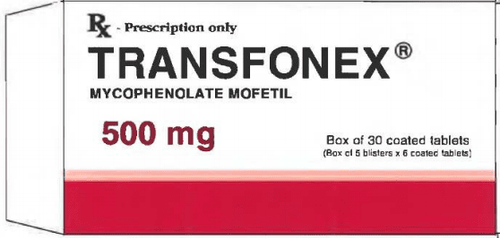This is an automatically translated article.
Graftac is indicated for the prevention of rejection in patients with organ transplants such as liver, kidney or heart, and to help with resistance to other immunosuppressive drugs. What are the uses of Graftac?1. What are the effects of Graftac 5mg?
Graftac belongs to the group of anti-cancer drugs and acts on the immune system with the active ingredient tacrolimus in the form of tacrolimus monohydrate 5mg. In particular, tacrolimus is a potent immunosuppressive agent that inhibits the formation of cytotoxic lymphocytes, which is a substance with major effects in transplant rejection. Tacrolimus inhibits T-cell activation and helper T-cell-dependent B-cell proliferation as well as the formation of lymphokines, and the expression of interleukin-2 receptors.Besides the above uses, Graftac may also be used to treat some other conditions that are not listed above. Therefore, you should consult your doctor before using the drug for advice on how to use the drug in the most effective way.
2. Usage and dosage of Graftac 5mg
Graftac is made in the form of tablets, so it can be used on an empty stomach or on an empty stomach, taking it with a full glass of water to avoid stomach irritation. Dosage of Graftac will depend on the patient's disease status and age such as:For adults: Liver transplant patients take the starting dose from 100-200 mcg/kg/day, divided into 2 times. Heart transplant patients take the starting dose of 75 mcg/kg/day, divided into 2 times Kidney transplant patients take the starting dose from 150-300 mcg/kg/day, divided into 2 times and liver transplantation oral dose starting at 300 mcg/kg/day, divided into 2 doses, administered within 6 hours of completion of liver and heart transplant surgery, within 24 hours of completion of kidney transplant. The maintenance dose should be adjusted based on the trough concentration of tacrolimus in whole blood or plasma of the patient. Most patients respond well when total blood levels are maintained below 20 mg/ml. Children usually need a dose 1.5 - 2 times the adult dose to achieve the same drug concentration in the blood. Use Graftac regularly to get the most benefit from it. To take your medicine safely, take Graftac exactly as directed by your doctor. Do not use more, smaller doses or for longer than prescribed. Users absolutely must not increase the dose of the drug on their own or abuse the drug for too long for a long time.
3. Undesirable effects when using Graftac 5mg
Some unwanted effects that may occur when using Graftac include:
Neurotoxicity Tremor Headache Paresthesias Nausea Diarrheal Hypertension Leukopenia Renal failure Anemia Leukopenia Decrease Thrombocytopenia Water and electrical disturbances Hyperkalemia Mood changes Sleep disturbances Dizziness Tinnitus Visual disturbances Convulsions Carbohydrate metabolism disorders Diabetes mellitus Tachycardia Myocardial hypertrophy Asthma Shortness of breath Pleural effusion Hair loss Musculoskeletal pain Cramps Peripheral edema Liver dysfunction Blood clotting disorders Before prescribing a drug, the doctor always considers the benefits and effects of Graftac more than the risk of side effects. However, in some cases when taking Graftac, unwanted effects may still occur. Therefore, if unusual signs appear after taking the drug and especially when a severe allergic reaction is accompanied by signs such as severe dizziness, difficulty breathing, the face, throat and tongue area swelling, rash or itching,... In this case, the patient or family member should immediately notify the medical staff for timely treatment.
4. Some notes when using Graftac 5mg
Some notes when using Graftac include:
Inform your doctor about any history of hypersensitivity, allergy to Graftac or any other allergies. Graftac may contain ingredients that are inactive and could cause an allergic reaction or other serious problems. Users need to inform the doctor about the medicines you are taking including: prescription drugs, over-the-counter medicines, herbs and supplements, other foods, preservatives. preservatives or dyes. The drug should be used with caution in patients with hepatic and renal impairment, the dose of the drug should be adjusted accordingly, and tacrolimus blood levels should be monitored in the patient. During the initial period after organ transplantation, it is necessary to monitor various parameters such as blood pressure, neurological and visual status, ECG, blood glucose, electrolytes, especially potassium, blood count, liver and kidney function, coagulation index and plasma protein. As with other immunosuppressive drugs, the use of tacrolimus increases the risk of infection and malignancy. Use caution with intrauterine devices and avoid the use of live attenuated vaccines during immunosuppressive therapy. Graftac can affect nerve function and vision, so care should be taken in patients who have to do tasks that require high concentration, such as driving long distances or operating machinery. In pregnant women, Graftac can cross the placenta, but there are not enough studies on the effects on the fetus. In pregnant women, hyperkalemia and kidney damage in the neonate have occurred. So weigh the benefits and risks before taking the drug. For women who are breastfeeding, Graftac is distributed into breast milk, so the mother should stop breastfeeding during treatment.
5. Treatment when missed dose, drug overdose
In case if the patient forgets to take a dose, the missed dose should be replenished as soon as possible. Therefore, if the time of remembering is close to the time of the next dose, skip the missed dose and continue taking the medicine as scheduled. Patients absolutely must not arbitrarily use drugs twice the dose more than the treatment regimen.
Graftac overdose can cause serious symptoms such as nausea, vomiting, abdominal pain, weakness,...
6. Drug interactions
Drug interactions can reduce the effect of Graftac, or increase the effect of unwanted effects. You should tell your doctor about all other medicines you are taking including vitamins, prescription and over-the-counter medicines or other herbal products. In addition, patients should not stop, start or change the dosage of any medication without their doctor's consent.
Some drugs that can interact with Graftac include:
Diuretics Azoline antifungals Bromocriptin Calcium channel blockers Cimetidine Corticosteroids Ciclosporin Danazol HIV-protease inhibitors Delavirdin Macrolide and metoclopramide antibiotics Carbamazepine Nevirapine Phenobarbital Phenytoin Rifampicin Bao Store Graftac at room temperature, protected from light and away from moisture. Do not store Graftac in a humid place or in the freezer. Keep Graftac out of the reach of children and family pets. If the dose is past its expiry date or the dose is damaged and cannot be used anymore, dispose of the medicine according to the correct procedure.
In summary, Graftac is indicated for the prevention of graft rejection in liver, kidney or heart transplant recipients, and for the treatment of allografts in transplant patients resistant to other immunosuppressive drugs. However, Graftac can cause some unwanted effects and drug interactions, so tell your doctor what medicines you are taking to reduce the risk of unwanted effects and also tell your doctor. help increase the effectiveness of the treatment.
Follow Vinmec International General Hospital website to get more health, nutrition and beauty information to protect the health of yourself and your loved ones in your family.




